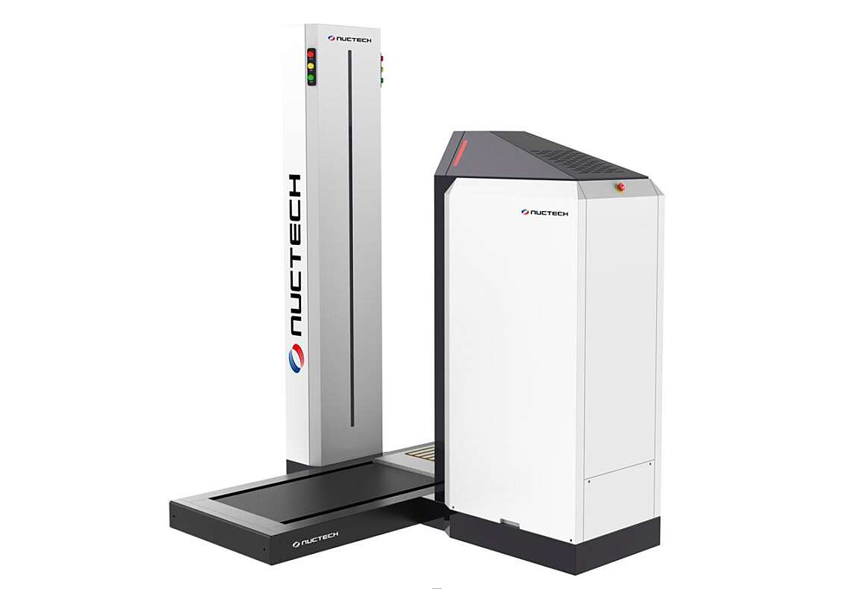Imagine a world where inspecting cargo and vehicles for contraband or dangerous items doesn’t feel like a tedious, nerve-wracking process. Well, thanks to some seriously innovative tech, that world is becoming a reality. New advanced scanners are hitting the scene, and they’re making waves in the way cargo inspections are carried out. These aren’t your run-of-the-mill machines either; they’re designed to be faster, safer, and way more efficient.
So, what’s the big deal about these new scanners? For starters, they use cutting-edge X-ray and Interlaced Dual-energy (IDE) Imaging technologies. This means they can peer inside containers and vehicles without having to physically open them up. Non-invasive inspection is not just a buzzword here; it’s the essence of streamlining the whole process. Imagine the time saved when you don’t have to manually check every nook and cranny! Plus, with high throughput capabilities, these systems can inspect a ton of cargo in a short amount of time – perfect for busy ports and border crossings.
But efficiency isn’t the only thing these new scanners bring to the table. Safety is a huge factor too. The technology ensures that inspections are thorough yet non-intrusive, which is crucial in maintaining the integrity of the cargo and ensuring nothing gets damaged in the process. It’s like having a superpower that lets you see through walls – only way more practical and less comic-booky.
How they make inspections faster and safer
Speed and safety are often at odds in many industries, but these new scanners are proving that you can have your cake and eat it too. With advanced features like License Plate Recognition (LPR) and Container Code Recognition (CCR), these systems can quickly identify and catalog vehicles and their contents without fumbling through paperwork or manual data entry.
These scanners also come equipped with Under Vehicle Surveillance Systems (UVSS). This means that they don’t just check what’s inside; they also keep an eye on what’s underneath. It’s an advanced cargo inspection system developed for comprehensive surveillance. It’s like having eyes everywhere, making sure nothing slips through the cracks. And because these systems are scalable – available in fixed, relocatable, and mobile versions – they can be tailored to fit any environment, from bustling airports to remote border crossings.
Moreover, the modular design of these scanners makes them easy to install and maintain. Technical support and after-sales services ensure that any hiccups are swiftly addressed, so downtime is minimized – making solutions like the NUCTECH™ HT2100TV-H highly reliable in varied operational settings. It’s a holistic approach to security and efficiency, rolled into one neat package.
Ai on guard duty
Artificial Intelligence (AI) isn’t just for sci-fi movies anymore; it’s now playing a crucial role in cargo inspection systems. These scanners leverage AI algorithms to analyze images quickly and accurately, identifying potential threats that might be missed by the human eye. It’s like having an extra layer of security that’s always alert and never tires.
By using AI-driven analysis, these systems can differentiate between harmless items and potential threats with remarkable precision. This not only speeds up the inspection process but also reduces false positives, meaning fewer unnecessary delays. Imagine not having to hold up shipments because some benign item was mistakenly flagged as dangerous.
The integration of AI also allows for continuous learning and improvement. As these systems encounter more data, they become smarter and more efficient over time. It’s like having a guard that gets better at their job every single day without needing coffee breaks or overtime pay.
See also: Threads Api Techmeme Hootsuitemehtatechcrunch
Smart sensors to the rescue
Ever wonder how some technologies seem almost psychic in their ability to detect issues before they become problems? That’s where smart sensors come into play in modern cargo inspection systems. These sensors are designed to pick up on anomalies that might indicate contraband or hazardous materials.
These sensors work hand-in-hand with advanced imaging technologies to provide a comprehensive inspection solution. They can detect changes in density, unusual shapes, or hidden compartments that might escape a standard visual check. It’s like having a sixth sense specifically tuned to sniff out trouble.
Detecting hazards before they become problems
By identifying potential issues early on, smart sensors help prevent problems before they escalate. For instance, if a sensor detects an anomaly in a cargo container that suggests the presence of explosives or toxic chemicals, appropriate measures can be taken immediately to neutralize the threat.
This proactive approach not only makes cargo inspections safer but also far more efficient. Knowing that every container has been thoroughly checked by state-of-the-art technology provides peace of mind for everyone involved – from shippers to customs officials.
Biometric security checks
Incorporating biometric security checks into cargo inspection systems might sound like something out of a futuristic spy movie, but it’s happening right now. These checks use unique physical characteristics – like fingerprints or facial recognition – to verify identities quickly and accurately.
Biometric checks add an extra layer of security by ensuring that only authorized personnel can access certain areas or handle specific tasks. This minimizes the risk of tampering or unauthorized access during the inspection process.
Moreover, biometric data is incredibly difficult to fake or steal compared to traditional ID cards or passwords. This makes it an invaluable tool in maintaining the integrity and security of cargo inspections.
The future looks bright for cargo safety
With all these advancements – from game-changing scanners to AI-driven analyses, smart sensors, and biometric checks – the future of cargo safety looks incredibly promising. These technologies are not just about keeping up with demand; they’re about staying ahead of potential threats in innovative ways.
As these systems continue to evolve and improve, we can expect even greater efficiency and security in cargo inspections worldwide. It’s an exciting time for an industry that’s always on the front lines of global trade and security.
And who knows? Maybe one day we’ll look back on this era as the turning point when cargo inspections became not just faster and safer but smarter too.







